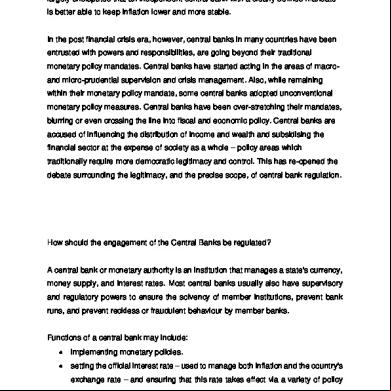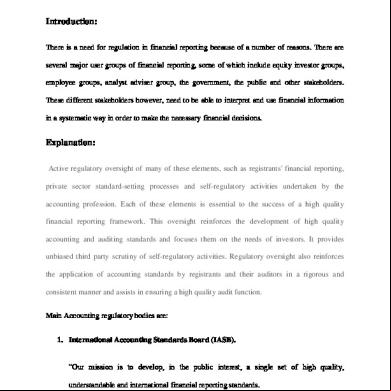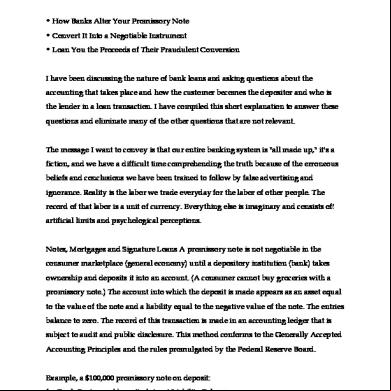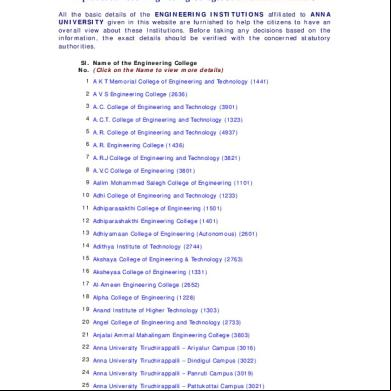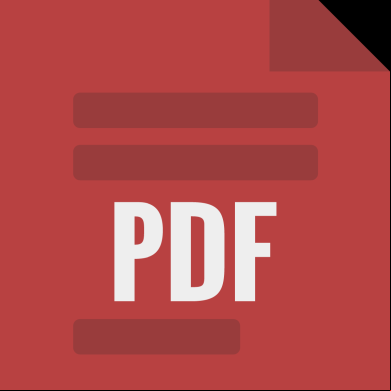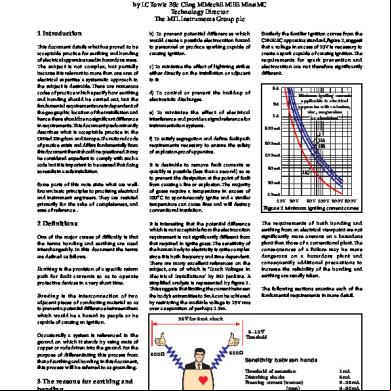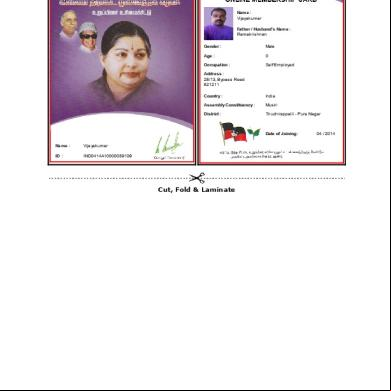How Should The Engagement Of The Central Banks Be Regulated 5t2h5x
This document was ed by and they confirmed that they have the permission to share it. If you are author or own the copyright of this book, please report to us by using this report form. Report 3b7i
Overview 3e4r5l
& View How Should The Engagement Of The Central Banks Be Regulated as PDF for free.
More details w3441
- Words: 1,959
- Pages: 7
Independence has been granted to central banks in order to shield them from shortterm political influence when fulfilling their mandate of ensuring price stability. It is largely undisputed that an independent central bank with a clearly defined mandate is better able to keep inflation lower and more stable.
In the post financial crisis era, however, central banks in many countries have been entrusted with powers and responsibilities, are going beyond their traditional monetary policy mandates. Central banks have started acting in the areas of macroand micro-prudential supervision and crisis management. Also, while remaining within their monetary policy mandate, some central banks adopted unconventional monetary policy measures. Central banks have been over-stretching their mandates, blurring or even crossing the line into fiscal and economic policy. Central banks are accused of influencing the distribution of income and wealth and subsidising the financial sector at the expense of society as a whole – policy areas which traditionally require more democratic legitimacy and control. This has re-opened the debate surrounding the legitimacy, and the precise scope, of central bank regulation.
How should the engagement of the Central Banks be regulated?
A central bank or monetary authority is an institution that manages a state's currency, money supply, and interest rates. Most central banks usually also have supervisory and regulatory powers to ensure the solvency of member institutions, prevent bank runs, and prevent reckless or fraudulent behaviour by member banks.
Functions of a central bank may include:
implementing monetary policies.
setting the official interest rate – used to manage both inflation and the country's exchange rate – and ensuring that this rate takes effect via a variety of policy mechanisms
controlling the nation's entire money supply
the Government's banker and the bankers' bank ("lender of last resort")
managing the country's foreign exchange and gold reserves and the Government's stock
regulating and supervising the banking industry
Central banks play a crucial role in ensuring economic and financial stability within a country. They conduct monetary policy to achieve low and stable inflation. Since the late 1980s, inflation targeting has emerged as the leading framework for monetary policy. Central banks in Canada, the euro area, the United Kingdom, New Zealand, and elsewhere have introduced an explicit inflation target. Many low-income countries are also making a transition from targeting a monetary aggregate to an inflation targeting framework.
Central bank independence is widely accepted as a necessary prerequisite for successful monetary policies. But considering political sentiment these days, along with the decline in inflation over the past few decades, there is a chance that this independence could come into question. Following the global financial crisis, central banks in advanced economies eased monetary policy by reducing interest rates until short-term rates came close to zero, which limited the option to cut policy rates further (i.e., conventional monetary options). With the danger of deflation rising, central banks undertook unconventional monetary policies, including buying bonds (especially in the United States, the United Kingdom, the euro area, and Japan) with the aim of further lowering long term rates and loosening monetary conditions. Some central banks even took short-term rates below zero.
Considering the May 2016 thought leadership piece by PIMCO Global Economic Advisor Joachim Fels, “The Downside of Central Bank Independence,” which argued that independent bankers ran amok with “second-best interventions such as quantitative easing (QE) or negative interest rate policy (NIRP), which distort financial markets and can have severe distributive consequences. Also, examining the March 2016 proposal by Joseph T. Salerno, professor of economics at Pace University in New York, called “A Modest Proposal to End Fed Independence.” Salerno pointed out
“a number of benefits of stripping the Fed of its quasi-independent status and transforming it into a handmaiden of the Treasury.”
The global financial crisis showed that countries need to contain risks to the financial system as a whole with dedicated financial policies.
How should the engagement of the Central Banks be regulated?
The engagement of Central Bank be should be regulated by effective frameworks with close relationship with third party autonomous institution such as IMF as follows :
There must be multilateral surveillance and policy papers to help improve global outcomes by consulting on policy advice on how to avoid potential side effects from the implementation of and exit from unconventional monetary policy.
There must be regular dialogue as part of bilateral surveillance. They should work together on monetary policy action to achieve low and stable inflation, as well as on establishing effective monetary policy and macroprudential policy frameworks.
There should be Financial Sector Assessment Program to provide an evaluation of their financial systems and in-depth advice on policy frameworks to contain and manage financial stability risks, including the macroprudential policy framework.
Independence from government and the political process is obviously helpful when the main enemy is high inflation, as it enhances a central bank’s credibility and helps monetary policy makers do tough things without political interference. One example is the “Paul Volcker recession” of the early 1980s, which was necessary to end the Great Inflation.
But what happens when the main enemy is not inflation, but deflation, debt overhangs and financial crises - in other words, the world since 2008?
Critics point out how the need or desire to defend their independence often hinders central banks from swiftly addressing these problems in the most direct and effective way (say, helicopter money or overt lender-of-last-resort action to underwrite troubled financial institutions or sovereigns).
Instead, independent central banks have had to deploy second-best interventions such as quantitative easing (QE) or negative interest rate policy (NIRP), which distort financial markets and can have severe distributive consequences. This actually has exposed central banks to severe criticism on two fronts — criticism of the second-best policies with their unforeseen effects and diminishing returns, and criticism for making decisions that the observers say belong in the hands of elected officials. The main rationale for making central banks independent was to enhance the credibility of inflation-targeting monetary policy, which became the standard approach to monetary policy after the demise of the gold standard and the ensuing Great Inflation of the 1970s and early 1980s. High and volatile inflation had become the economy’s main enemy, and the solution was to focus monetary policy exclusively on stabilizing inflation at low levels, with independence making that task easier to achieve.
The main problems today are continuing disinflationary or even deflationary global forces, public and private sector debt overhangs and the potential for new financial crises. Central banks would be better equipped to counter the challenges in today’s economy if they worked in close collaboration with and under the control of a democratically legitimized government.
One argument for direct government involvement and responsibility is that many of the decisions that are required to address today’s greatest problems have significant distributive consequences and are thus in the realm of fiscal policy rather than monetary policy. Think of the decision to save one major financial institution or let another one go bust. Think of the decision to serve as lender of last resort to weak sovereigns (several names spring to mind from the more recent eurozone crisis). Or think of the decision to buy large amounts of public and/or private sector assets and introduce negative interest rates to (try to) bring inflation back up to target. All of these decisions are tough ones to make for an independent central bank that, if it decides to
make them, will be harshly criticized by those who lose out in the redistribution that follows.
https://www.marketwatch.com/story/what-if-central-banks-were-no-longerindependent-2016-05-19
Critics of Central Banks Consider the May 2016 thought leadership piece by PIMCO Global Economic Advisor Joachim Fels, “The Downside of Central Bank Independence,” which argued that independent bankers ran amok with “second-best interventions such as quantitative easing (QE) or negative interest rate policy (NIRP), which distort financial markets and can have severe distributive consequences. Also, examine the March 2016 proposal by Joseph T. Salerno, professor of economics at Pace University in New York, called “A Modest Proposal to End Fed Independence.” Salerno pointed out “a number of benefits of stripping the Fed of its quasi-independent status and transforming it into a handmaiden of the Treasury.”
Why Central Banks Are Independent Historically, governments do not responsibly handle the duty of conducting monetary policy. The most infamous modern cases, Argentina, Hungary, Zimbabwe and preWWII , ended in brutal hyperinflation. This is because it is tempting for governments to explode beyond their own budget constraints or for politicians to enrich themselves at the expense of their citizens' purchasing power. In short, the Fed theoretically needs independence to make neutral, politics-free monetary policy decisions without direct political pressures.
For these reasons and several more, most serious policy analysts of the 20th century considered independence a prerequisite for any effective central bank. Calls for reform have only come after the recent and disastrous failures of contemporary central banks, especially the big three: The Federal Reserve, European Central Bank (ECB) and Bank of Japan (BOJ).
Failures of Central Banking
The Fed has had difficulty on two fronts. First there was the massive data leak by Goldman Sachs Group (NYSE: GS). Former managing director Joseph Jiampietro allegedly obtained and shared confidential Fed information to win new contracts, a move that eventually forced Goldman to pay $36.3 million in a settlement. This episode followed a $50 million settlement in October 2015 when a different Goldman employee obtained 35 confidential Fed documents.
The second issue is performance. As Mohamed El-Erian wrote for Bloomberg in June 2016, "unconventional central bank policies are overstretched and near exhaustion." More than a half-decade of desperate asset purchases and interest rate reductions by central banks left the world with unprecedented debt loads, over-inflated asset markets and rising inequality. The great concern of unchecked government control over the money supply, namely unchecked expansion based on economically dubious experiments, is now official policy for independent central banks.
Calls for Reform The loudest critics of Fed independence have been House Republicans, particularly those on the Financial Services Committee. In February 2015, Committee Chair Jeb Hensarling (R – TX) opened a hearing by telling Fed Chairwoman Janet Yellen he doubted the Fed’s efficacy and excoriated the central bank for a lack of transparency and ability. “Fed reform is coming,” Hensarling told Yellen. In July 2016, the Republican party announced that its platform for the 2016 elections will include “advance legislation that brings transparency and ability to the Federal Reserve.”
Yellen, as with former Chairman Ben Bernanke, has maintained a public profile during her tenure in an effort to appear more transparent. She regularly meets with the White House and Congress, and often gives policy speeches and holds press conferences to highlight Fed activity.
What a New Central Bank Could Look Like Opinions are shifting quickly. As recently as April 2014, the International Monetary Fund (IMF) held a conference on “Rethinking Macro Policy,” from which the general consensus was “central banks should retain full independence with respect to
traditional monetary policy.” By August 2015, the World Economic Forum openly questioned central bank independence and argued that policymakers should go beyond the taboo of coordinating fiscal and monetary policies.
Dr. Salerno recommends a more transparent and limited process controlled by istrative orders between treasury departments and central banks, stealing away the moral hazard of the lender of last resort and ridding central banks of their coordination with huge financial corporations. Voters would exercise much greater control over the political fortunes of such a process. Mr. Fels shares similar sentiments, contending that it would make more sense if central banks worked in close collaboration with governments and under the control of the democratic process.
Read
more:
Should
Central
Banks
Be
Independent?
|
Investopedia
https://www.investopedia.com/articles/insights/082416/should-central-banks-beindependent.asp#ixzz54i8ih0u2 Follow us: Investopedia on Facebook
https://www.bloomberg.com/view/articles/2017-08-07/maybe-central-banks-are-tooindependent
(source courtesy : https://en.wikipedia.org/wiki/Central_bank)
In the post financial crisis era, however, central banks in many countries have been entrusted with powers and responsibilities, are going beyond their traditional monetary policy mandates. Central banks have started acting in the areas of macroand micro-prudential supervision and crisis management. Also, while remaining within their monetary policy mandate, some central banks adopted unconventional monetary policy measures. Central banks have been over-stretching their mandates, blurring or even crossing the line into fiscal and economic policy. Central banks are accused of influencing the distribution of income and wealth and subsidising the financial sector at the expense of society as a whole – policy areas which traditionally require more democratic legitimacy and control. This has re-opened the debate surrounding the legitimacy, and the precise scope, of central bank regulation.
How should the engagement of the Central Banks be regulated?
A central bank or monetary authority is an institution that manages a state's currency, money supply, and interest rates. Most central banks usually also have supervisory and regulatory powers to ensure the solvency of member institutions, prevent bank runs, and prevent reckless or fraudulent behaviour by member banks.
Functions of a central bank may include:
implementing monetary policies.
setting the official interest rate – used to manage both inflation and the country's exchange rate – and ensuring that this rate takes effect via a variety of policy mechanisms
controlling the nation's entire money supply
the Government's banker and the bankers' bank ("lender of last resort")
managing the country's foreign exchange and gold reserves and the Government's stock
regulating and supervising the banking industry
Central banks play a crucial role in ensuring economic and financial stability within a country. They conduct monetary policy to achieve low and stable inflation. Since the late 1980s, inflation targeting has emerged as the leading framework for monetary policy. Central banks in Canada, the euro area, the United Kingdom, New Zealand, and elsewhere have introduced an explicit inflation target. Many low-income countries are also making a transition from targeting a monetary aggregate to an inflation targeting framework.
Central bank independence is widely accepted as a necessary prerequisite for successful monetary policies. But considering political sentiment these days, along with the decline in inflation over the past few decades, there is a chance that this independence could come into question. Following the global financial crisis, central banks in advanced economies eased monetary policy by reducing interest rates until short-term rates came close to zero, which limited the option to cut policy rates further (i.e., conventional monetary options). With the danger of deflation rising, central banks undertook unconventional monetary policies, including buying bonds (especially in the United States, the United Kingdom, the euro area, and Japan) with the aim of further lowering long term rates and loosening monetary conditions. Some central banks even took short-term rates below zero.
Considering the May 2016 thought leadership piece by PIMCO Global Economic Advisor Joachim Fels, “The Downside of Central Bank Independence,” which argued that independent bankers ran amok with “second-best interventions such as quantitative easing (QE) or negative interest rate policy (NIRP), which distort financial markets and can have severe distributive consequences. Also, examining the March 2016 proposal by Joseph T. Salerno, professor of economics at Pace University in New York, called “A Modest Proposal to End Fed Independence.” Salerno pointed out
“a number of benefits of stripping the Fed of its quasi-independent status and transforming it into a handmaiden of the Treasury.”
The global financial crisis showed that countries need to contain risks to the financial system as a whole with dedicated financial policies.
How should the engagement of the Central Banks be regulated?
The engagement of Central Bank be should be regulated by effective frameworks with close relationship with third party autonomous institution such as IMF as follows :
There must be multilateral surveillance and policy papers to help improve global outcomes by consulting on policy advice on how to avoid potential side effects from the implementation of and exit from unconventional monetary policy.
There must be regular dialogue as part of bilateral surveillance. They should work together on monetary policy action to achieve low and stable inflation, as well as on establishing effective monetary policy and macroprudential policy frameworks.
There should be Financial Sector Assessment Program to provide an evaluation of their financial systems and in-depth advice on policy frameworks to contain and manage financial stability risks, including the macroprudential policy framework.
Independence from government and the political process is obviously helpful when the main enemy is high inflation, as it enhances a central bank’s credibility and helps monetary policy makers do tough things without political interference. One example is the “Paul Volcker recession” of the early 1980s, which was necessary to end the Great Inflation.
But what happens when the main enemy is not inflation, but deflation, debt overhangs and financial crises - in other words, the world since 2008?
Critics point out how the need or desire to defend their independence often hinders central banks from swiftly addressing these problems in the most direct and effective way (say, helicopter money or overt lender-of-last-resort action to underwrite troubled financial institutions or sovereigns).
Instead, independent central banks have had to deploy second-best interventions such as quantitative easing (QE) or negative interest rate policy (NIRP), which distort financial markets and can have severe distributive consequences. This actually has exposed central banks to severe criticism on two fronts — criticism of the second-best policies with their unforeseen effects and diminishing returns, and criticism for making decisions that the observers say belong in the hands of elected officials. The main rationale for making central banks independent was to enhance the credibility of inflation-targeting monetary policy, which became the standard approach to monetary policy after the demise of the gold standard and the ensuing Great Inflation of the 1970s and early 1980s. High and volatile inflation had become the economy’s main enemy, and the solution was to focus monetary policy exclusively on stabilizing inflation at low levels, with independence making that task easier to achieve.
The main problems today are continuing disinflationary or even deflationary global forces, public and private sector debt overhangs and the potential for new financial crises. Central banks would be better equipped to counter the challenges in today’s economy if they worked in close collaboration with and under the control of a democratically legitimized government.
One argument for direct government involvement and responsibility is that many of the decisions that are required to address today’s greatest problems have significant distributive consequences and are thus in the realm of fiscal policy rather than monetary policy. Think of the decision to save one major financial institution or let another one go bust. Think of the decision to serve as lender of last resort to weak sovereigns (several names spring to mind from the more recent eurozone crisis). Or think of the decision to buy large amounts of public and/or private sector assets and introduce negative interest rates to (try to) bring inflation back up to target. All of these decisions are tough ones to make for an independent central bank that, if it decides to
make them, will be harshly criticized by those who lose out in the redistribution that follows.
https://www.marketwatch.com/story/what-if-central-banks-were-no-longerindependent-2016-05-19
Critics of Central Banks Consider the May 2016 thought leadership piece by PIMCO Global Economic Advisor Joachim Fels, “The Downside of Central Bank Independence,” which argued that independent bankers ran amok with “second-best interventions such as quantitative easing (QE) or negative interest rate policy (NIRP), which distort financial markets and can have severe distributive consequences. Also, examine the March 2016 proposal by Joseph T. Salerno, professor of economics at Pace University in New York, called “A Modest Proposal to End Fed Independence.” Salerno pointed out “a number of benefits of stripping the Fed of its quasi-independent status and transforming it into a handmaiden of the Treasury.”
Why Central Banks Are Independent Historically, governments do not responsibly handle the duty of conducting monetary policy. The most infamous modern cases, Argentina, Hungary, Zimbabwe and preWWII , ended in brutal hyperinflation. This is because it is tempting for governments to explode beyond their own budget constraints or for politicians to enrich themselves at the expense of their citizens' purchasing power. In short, the Fed theoretically needs independence to make neutral, politics-free monetary policy decisions without direct political pressures.
For these reasons and several more, most serious policy analysts of the 20th century considered independence a prerequisite for any effective central bank. Calls for reform have only come after the recent and disastrous failures of contemporary central banks, especially the big three: The Federal Reserve, European Central Bank (ECB) and Bank of Japan (BOJ).
Failures of Central Banking
The Fed has had difficulty on two fronts. First there was the massive data leak by Goldman Sachs Group (NYSE: GS). Former managing director Joseph Jiampietro allegedly obtained and shared confidential Fed information to win new contracts, a move that eventually forced Goldman to pay $36.3 million in a settlement. This episode followed a $50 million settlement in October 2015 when a different Goldman employee obtained 35 confidential Fed documents.
The second issue is performance. As Mohamed El-Erian wrote for Bloomberg in June 2016, "unconventional central bank policies are overstretched and near exhaustion." More than a half-decade of desperate asset purchases and interest rate reductions by central banks left the world with unprecedented debt loads, over-inflated asset markets and rising inequality. The great concern of unchecked government control over the money supply, namely unchecked expansion based on economically dubious experiments, is now official policy for independent central banks.
Calls for Reform The loudest critics of Fed independence have been House Republicans, particularly those on the Financial Services Committee. In February 2015, Committee Chair Jeb Hensarling (R – TX) opened a hearing by telling Fed Chairwoman Janet Yellen he doubted the Fed’s efficacy and excoriated the central bank for a lack of transparency and ability. “Fed reform is coming,” Hensarling told Yellen. In July 2016, the Republican party announced that its platform for the 2016 elections will include “advance legislation that brings transparency and ability to the Federal Reserve.”
Yellen, as with former Chairman Ben Bernanke, has maintained a public profile during her tenure in an effort to appear more transparent. She regularly meets with the White House and Congress, and often gives policy speeches and holds press conferences to highlight Fed activity.
What a New Central Bank Could Look Like Opinions are shifting quickly. As recently as April 2014, the International Monetary Fund (IMF) held a conference on “Rethinking Macro Policy,” from which the general consensus was “central banks should retain full independence with respect to
traditional monetary policy.” By August 2015, the World Economic Forum openly questioned central bank independence and argued that policymakers should go beyond the taboo of coordinating fiscal and monetary policies.
Dr. Salerno recommends a more transparent and limited process controlled by istrative orders between treasury departments and central banks, stealing away the moral hazard of the lender of last resort and ridding central banks of their coordination with huge financial corporations. Voters would exercise much greater control over the political fortunes of such a process. Mr. Fels shares similar sentiments, contending that it would make more sense if central banks worked in close collaboration with governments and under the control of the democratic process.
Read
more:
Should
Central
Banks
Be
Independent?
|
Investopedia
https://www.investopedia.com/articles/insights/082416/should-central-banks-beindependent.asp#ixzz54i8ih0u2 Follow us: Investopedia on Facebook
https://www.bloomberg.com/view/articles/2017-08-07/maybe-central-banks-are-tooindependent
(source courtesy : https://en.wikipedia.org/wiki/Central_bank)
